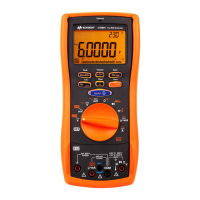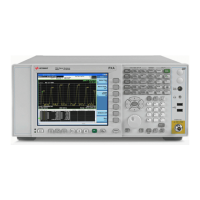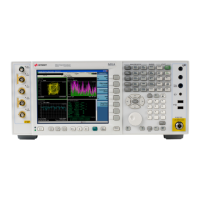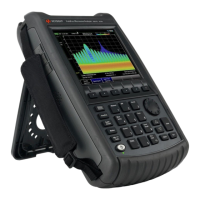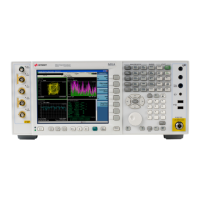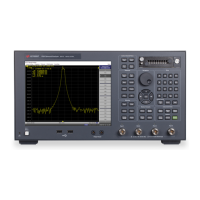Introduction to Programming 1
Keysight U2722A/U2723A Programmer’s Reference 15
Command Separators
A colon ( : ) is used to separate a command keyword from a lower-level keyword.
You must insert a blank space to separate a parameter from a command keyword.
If a command requires more than one parameter, you must separate adjacent
parameters using a comma as shown below.
SOUR:VOLT:RANG R2V, (@1)
A semicolon ( ; ) is used to separate commands within the same subsystem, and
can also minimize typing. For example, sending the following command string.
SENS:SWE:POIN 1000, (@1); TINT 10, (@1)
... is the same as sending the following two commands.
SENS:SWE:POIN 1000, (@1)
SENS:SWE:TINT 10, (@1)
Use a colon and semicolon to link commands from different subsystems. For
example, in the following command string, an error is generated if you do not use
both the colon and semicolon.
SOUR:VOLT:RANG R2V, (@1);:SENS:SWE:POIN 1000, (@1)
Querying Parameter Settings
You can query the current value of most parameters by adding a question
mark ( ? ) to the command. For example, the following command sets the current
range to 10 mA for output 1.
SOUR:CURR:RANG R10mA, (@1)
You can then query the current range setting by sending:
SOUR:CURR:RANG? (@1)
Typical Response: R10mA
Colons and semicolons can be used to link multple commands together, from
the same subsystem or from different subsystems, in a single command string.
However, you are limited to a maximum of 3000 characters (combined) for each
command string.

